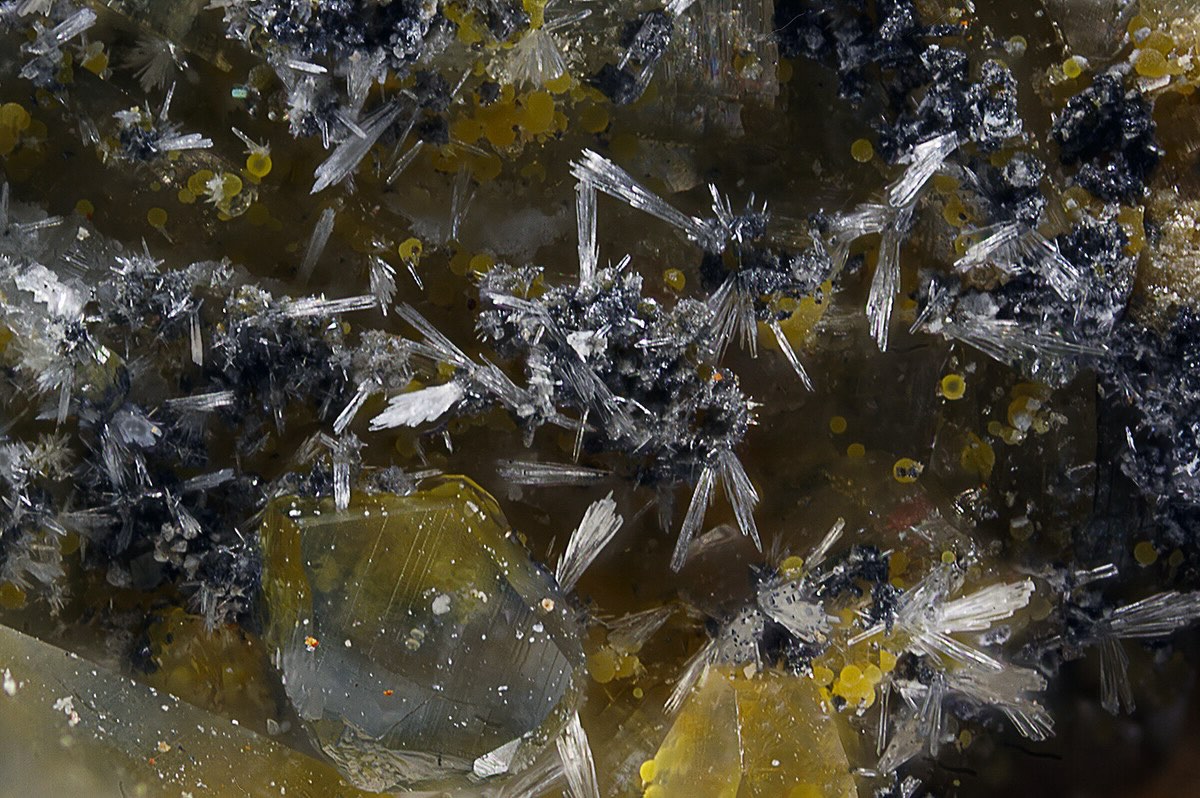
Warikahnite is a rare mineral that often sparks curiosity among geology enthusiasts. But what exactly makes this mineral so special? Warikahnite is a zinc arsenate mineral, typically found in the Tsumeb Mine in Namibia. Its unique crystal structure and striking appearance make it a subject of fascination. This mineral is not just about looks; it also has intriguing properties and a rich history. From its chemical composition to its formation process, Warikahnite offers a glimpse into the complexities of Earth's geology. Ready to dive into 25 captivating facts about this extraordinary mineral? Let's get started!
Key Takeaways:
- Warikahnite is a rare, white mineral with toxic arsenic. It forms in oxidized zinc ore deposits and is prized by collectors for its unique properties and high market value.
- Found in Namibia, Warikahnite is a sought-after mineral with prismatic crystals and a glass-like appearance. Its rarity and toxicity make it a valuable and fascinating addition to mineral collections.
What is Warikahnite?
Warikahnite is a rare mineral that fascinates geologists and collectors alike. Its unique properties and limited occurrence make it a subject of interest in the mineral world. Let's dive into some intriguing facts about this mineral.
-
Warikahnite is a zinc arsenate mineral. This means it contains zinc and arsenic in its chemical composition.
-
The mineral was first discovered in Tsumeb, Namibia. This location is famous for its rich deposits of various minerals.
-
Warikahnite typically forms in oxidized zones of zinc ore deposits. These areas are where zinc ores have been exposed to oxygen and water, leading to the formation of new minerals.
-
The mineral is named after Warikahn, a local term in Namibia. This name reflects its place of discovery and cultural significance.
-
Warikahnite has a white to colorless appearance. This makes it visually distinct from many other minerals that often have vibrant colors.
-
It has a monoclinic crystal system. This means its crystal structure is shaped like a skewed rectangle, which is less common among minerals.
-
Warikahnite is relatively soft, with a Mohs hardness of 3. This makes it easy to scratch with a knife or even a copper coin.
-
The mineral has a vitreous luster, giving it a glass-like appearance when light reflects off its surface.
-
Warikahnite is often found in association with other minerals like adamite, smithsonite, and hemimorphite. These minerals share similar formation environments.
-
It is considered a secondary mineral. This means it forms from the alteration of primary minerals rather than directly from molten rock.
Chemical Properties of Warikahnite
Understanding the chemical properties of Warikahnite can provide insights into its formation and stability. Here are some key chemical facts about this mineral.
-
Warikahnite's chemical formula is Zn3(AsO4)2·2H2O. This indicates it contains zinc, arsenic, oxygen, and water molecules.
-
The mineral is soluble in acids. This property is useful for geologists who want to study its composition in detail.
-
Warikahnite can dehydrate when heated. This means it loses its water content and changes its structure when exposed to high temperatures.
-
The presence of arsenic makes Warikahnite toxic. Handling it requires caution to avoid potential health risks.
-
Warikahnite's specific gravity is around 4.1. This makes it denser than many common minerals.
Physical Characteristics of Warikahnite
The physical characteristics of Warikahnite make it unique and identifiable. Here are some notable physical traits.
-
Warikahnite crystals are often prismatic. This means they have elongated shapes with well-defined faces.
-
The mineral can exhibit cleavage. This means it can break along specific planes, creating smooth surfaces.
-
Warikahnite has a brittle tenacity. This means it can easily break or crumble under pressure.
-
The mineral's streak is white. When rubbed against a porcelain plate, it leaves a white powder.
-
Warikahnite can fluoresce under ultraviolet light. This property makes it glow, which is useful for identification.
Occurrence and Collection
Warikahnite's rarity and specific occurrence make it a prized mineral for collectors. Here are some facts about its occurrence and collection.
-
Warikahnite is primarily found in Namibia. However, small deposits have also been reported in other parts of the world.
-
The mineral is often collected by specialized mineral collectors. Its rarity and unique properties make it highly sought after.
-
Warikahnite specimens can be expensive. Due to its rarity, high-quality samples can fetch high prices in the mineral market.
-
The mineral is often found in small quantities. Large deposits are rare, making each find significant.
-
Warikahnite is often displayed in museums. Its unique properties and rarity make it an interesting exhibit for educational purposes.
Warikahnite: A Hidden Gem in Mineralogy
Warikahnite, with its unique properties and fascinating history, stands out in the world of minerals. This rare mineral, discovered in the 20th century, continues to intrigue scientists and collectors alike. Its distinct crystal structure and composition make it a subject of ongoing research and admiration. Whether you're a seasoned geologist or just someone with a budding interest in minerals, warikahnite offers a glimpse into the Earth's hidden treasures. From its formation to its discovery, every aspect of warikahnite tells a story of nature's complexity and beauty. So next time you come across this mineral, remember the rich history and the scientific marvel it represents. Warikahnite isn't just a mineral; it's a testament to the wonders of geology and the endless mysteries our planet holds.
Frequently Asked Questions
Was this page helpful?
Our commitment to delivering trustworthy and engaging content is at the heart of what we do. Each fact on our site is contributed by real users like you, bringing a wealth of diverse insights and information. To ensure the highest standards of accuracy and reliability, our dedicated editors meticulously review each submission. This process guarantees that the facts we share are not only fascinating but also credible. Trust in our commitment to quality and authenticity as you explore and learn with us.
